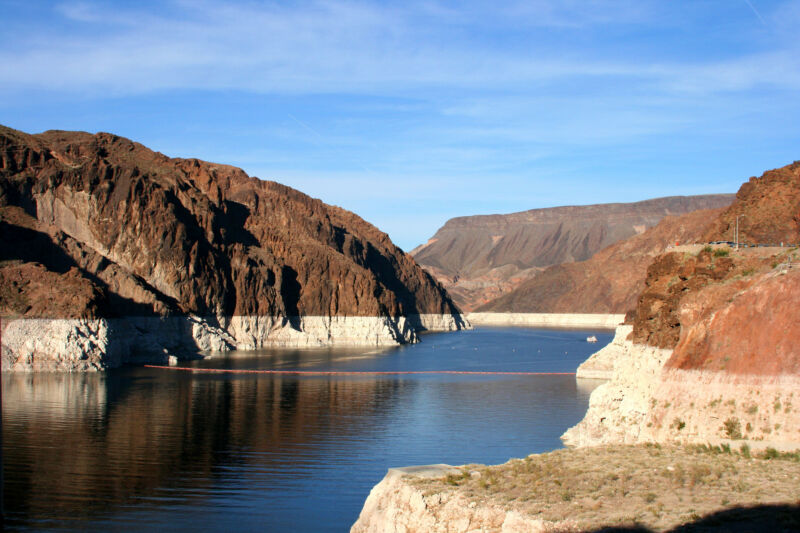
In 2014, the Colorado River reached the ocean for the first time in 16 years. Most years, the river doesn't make it that far because it has been dammed and diverted along the way, supplying fresh water to approximately 40 million people and supporting agriculture and economic activity in the dry Southwestern United States.
As climate change disrupts historical patterns of rainfall and temperature, the Colorado River has not been faring well, and it's getting even increasingly unlikely that the river will reach the sea again. A paper published this week in Science reports that the river's flow has been declining by an alarming 9.3 percent for every 1°C of warming—and that declining snow levels are the main culprit for this dramatic decline.
Some history
For a resource as critical and carefully managed as the Colorado River, precision is key. Just knowing that it's declining in response to climate change is not enough; more crucial is knowing how much that decline is likely to be.
But figuring out how much a river's flow is likely to decline is not a simple task. Climate change alters all sorts of variables, from the actual air temperature to how much precipitation falls and whether it falls as snow or rain. Because these factors all feed into each other, researchers hit on different estimates for how rivers around the world will change in the face of warming. These discrepancies, write US Geological Survey researchers P. Chris Milly and Krista Dunne, lead to a huge amount of uncertainty for our understanding of how water shortages will affect "human livelihood, economic activity, and ecosystem health."
To get a better handle on how warming will affect the Colorado River, Milly and Dunne first looked backward. They used historical data going back to 1912 to build a computer simulation of the river, dividing its vast length into hundreds of sub-areas with unique features, like different topography and rainfall.
The simulation allowed them to work out how different climate factors affected the river's flow. They hit on one factor in particular that was playing an important role: reduced snow cover, which leads to more evaporation. Less snow means more dark ground is exposed and absorbing heat, instead of being covered in white stuff that reflects light. The warmer ground means higher rates of evaporation and, thus, less water in the river.
Snow cover is a "protective shield," write Milly and Dunne. And that shield is slowly being lost.
A dry future
What does this mean for the future of the river and the people who depend on it? To figure that out, Milly and Dunne looked at a range of climate models that predict how global temperatures will change in the future, using scenarios that depend on how well we do at curbing emissions.
Under a "business as usual" scenario, their model predicted that the river's levels would drop by 19 to 31 percent by 2065. Under a more optimistic scenario, the model predicted declines of 14 to 26 percent. Even if more water falls as rain instead of snow, it's unlikely that it will be enough to counter this decline, the researchers note.
Scientists have struggled to agree on an explanation for why the Colorado River has declined so severely, says Keith Musselman, a hydrologist who wasn't involved in this research. This paper's progress toward figuring out the reasons for that decline is significant, he says. Simulations like these always have a degree of uncertainty, but the study is an "excellent example" of how they can be used alongside real-world data to build a better understanding of our water systems and how sensitive they are to change, Musselman says.
Despite the crucial role of mountain snow in supporting agriculture and life in the arid Western United States, Musselman adds, we don't understand nearly enough about it. Paying more attention to snow, and how it relates to our rivers, groundwater, and reservoirs, is "critical to understanding society's vulnerabilities to climate change."
Science, 2020. DOI: 10.1126/science.aay9187 (About DOIs).
reader comments
213